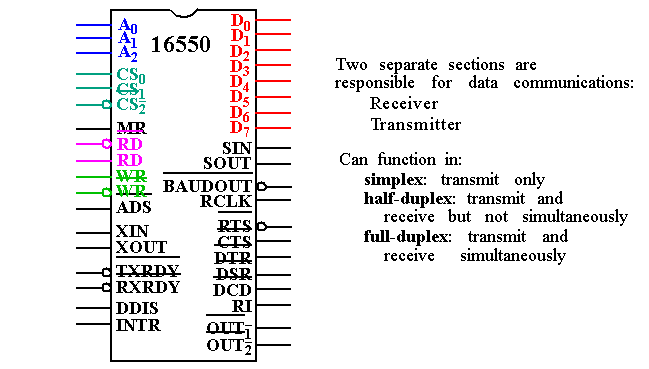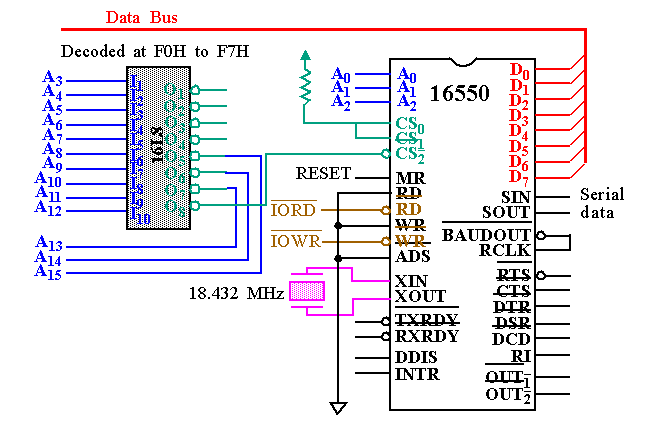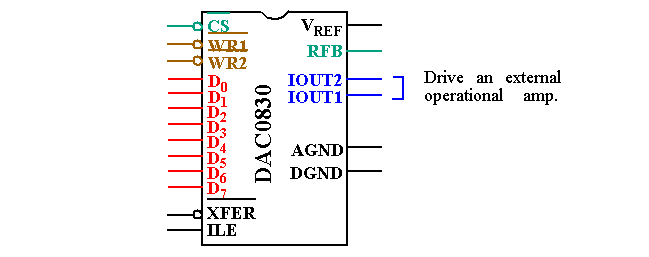Programmable Communications Interface: 16550
- Operation speed: 0-1.5M Baud (Baud is # of bits transmitted/sec, including start, stop, data and parity).
- Includes:
- A programmable Baud rate generator.
- Separate FIFO buffers for input and and output data (16 bytes each).












